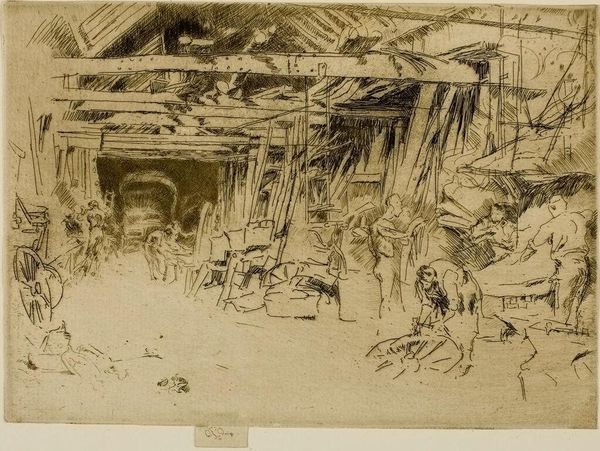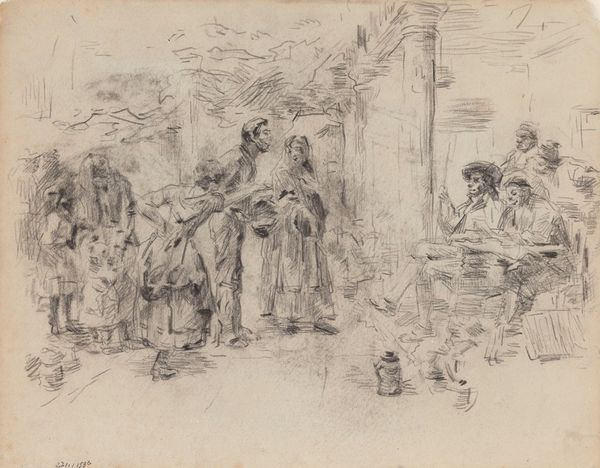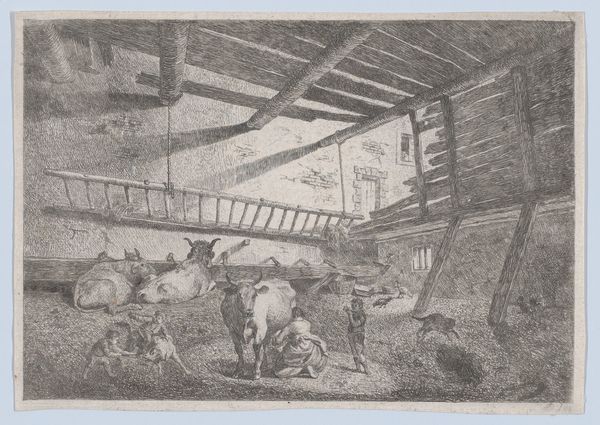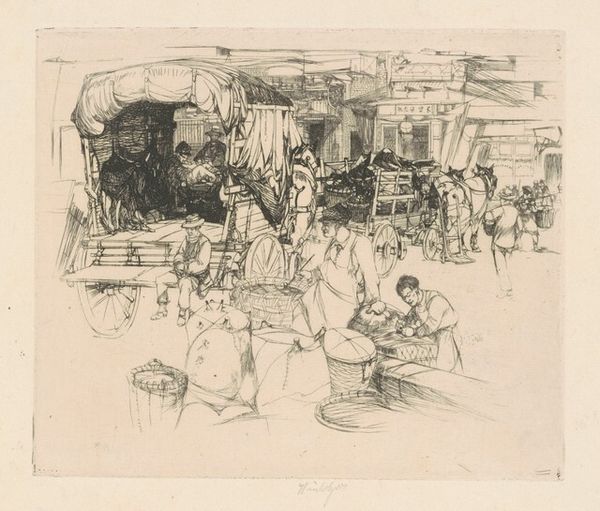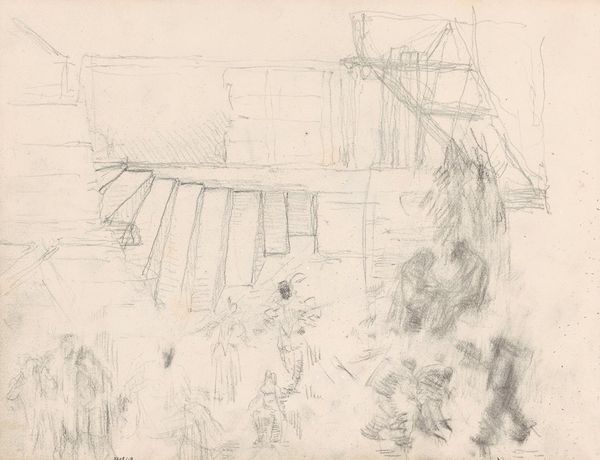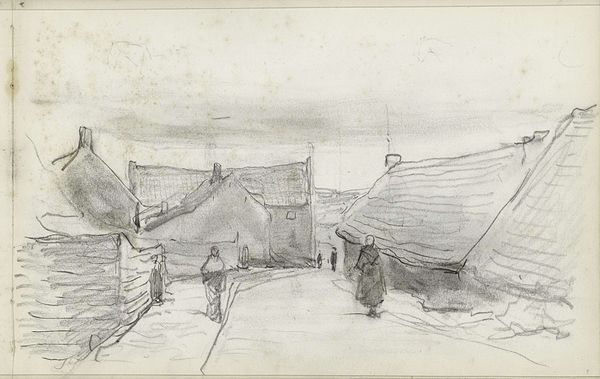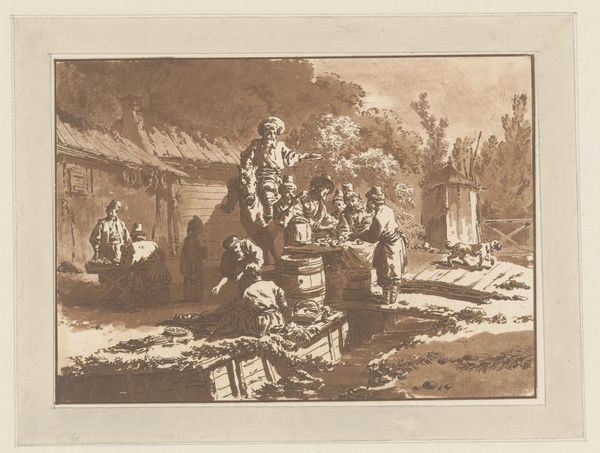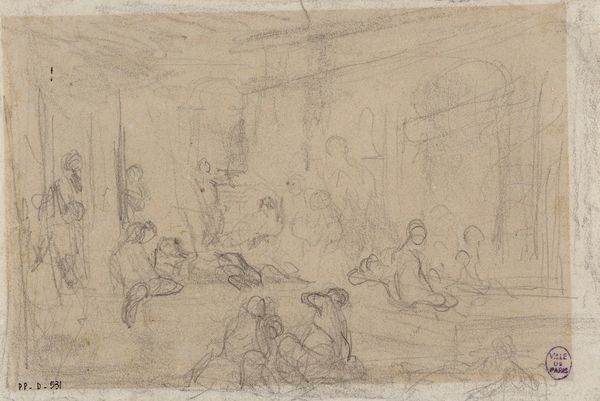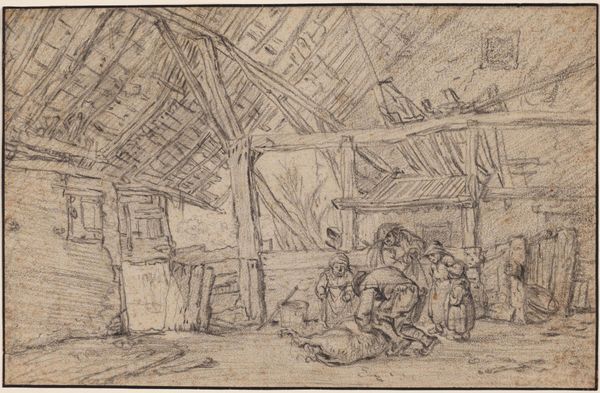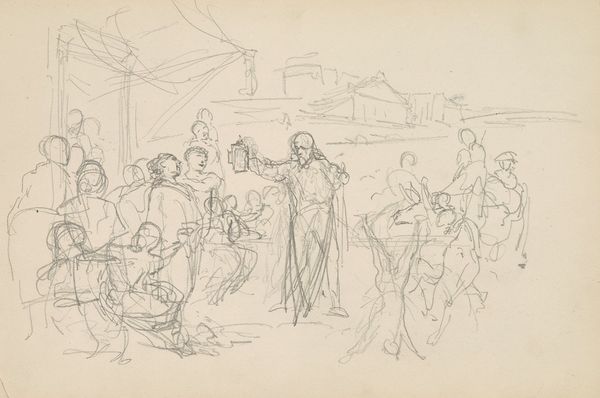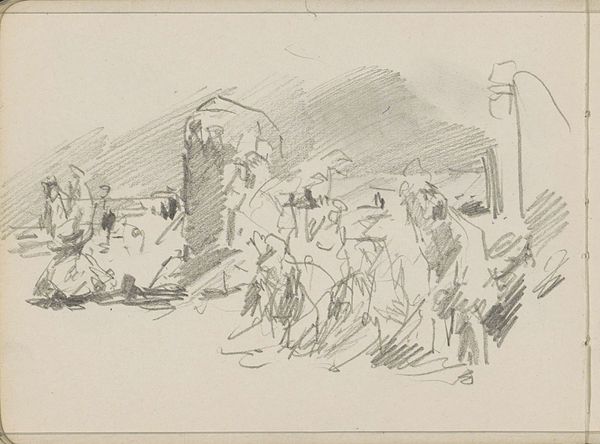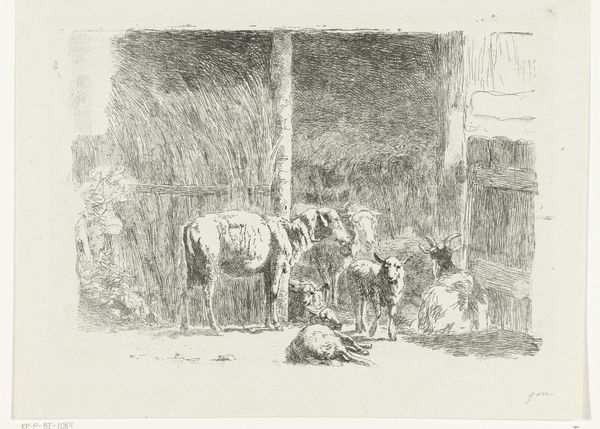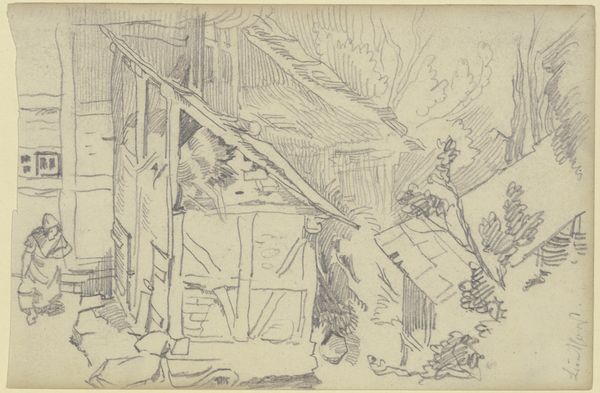
drawing, print, etching
#
drawing
# print
#
impressionism
#
pen sketch
#
etching
#
pencil sketch
#
line
#
genre-painting
Copyright: Public Domain: Artvee
Curator: Whistler's etching, "Wheelwright," created around 1879-1880, offers us a peek into a workshop bustling with activity. What are your immediate impressions? Editor: It's all movement, isn't it? A flurry of lines that give the impression of figures bending, lifting, and working in this busy space. The materiality seems to be dominated by raw wood, tools, and what seems like pure labor. Curator: Indeed, this etching allows us insight into the often-overlooked labouring classes in London during this period, where industrialization was drastically altering social dynamics. Consider the way Whistler chose to portray a very ordinary workshop. How did that contribute to contemporary perceptions of labour? Editor: I'd say he elevates the workshop to a subject worthy of artistic examination, wouldn’t you? It seems almost Romantic, really. A space of honest production that is usually considered just the backstage of urban life is here highlighted through the direct observation of manual processes. It’s craft, it’s toil, it's how wheels literally come to be made and thus make a city roll on! Curator: Yes, and that very 'rolling on' that you describe reflects the dynamism Whistler captured. It almost certainly plays with Impressionistic ideals that sought to highlight momentary, fleeting scenes of modern life. But the fact that Whistler deliberately chose to picture a pre-industrial scene tells a complex story of industrial anxieties at the time, of nostalgia even. Editor: Absolutely. Look at the crisscrossing lines of the etching; it gives such weight to the wooden beams, planks, and spokes in various stages of creation. You get a strong sense of the weight and the texture of it. One could see how it reflects both the grit and the process that shapes them. You feel that constant transformation from tree to wheel. Curator: And consider Whistler's larger body of work. Many critics see "Wheelwright" as a reflection of the artistic movements and public taste being formed by institutions such as the Royal Academy. Did his selection of common subject matter invite criticism? Absolutely, his artistic choices placed him as an outsider from the Academy's aesthetic values, but today we celebrate him for expanding art’s vocabulary! Editor: Looking at this etching certainly enriches my sense of how Whistler saw beauty in the work itself. Curator: Yes, examining this reveals just how much these visual narratives affect public awareness to labor, which had been hidden behind factory walls for so long.
Comments
No comments
Be the first to comment and join the conversation on the ultimate creative platform.
